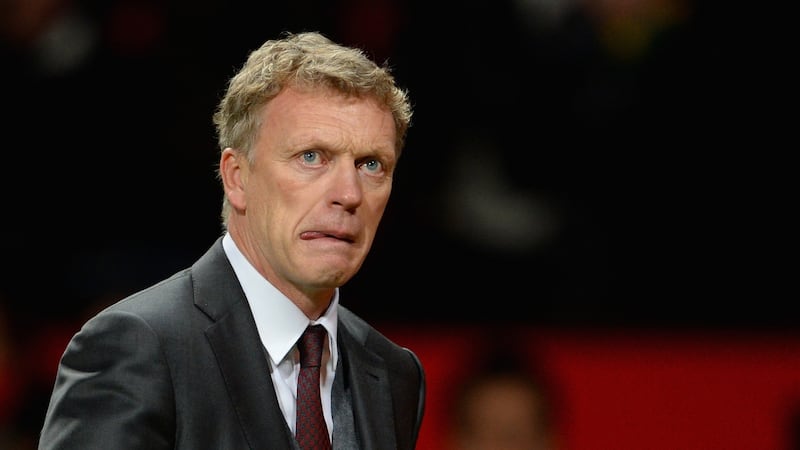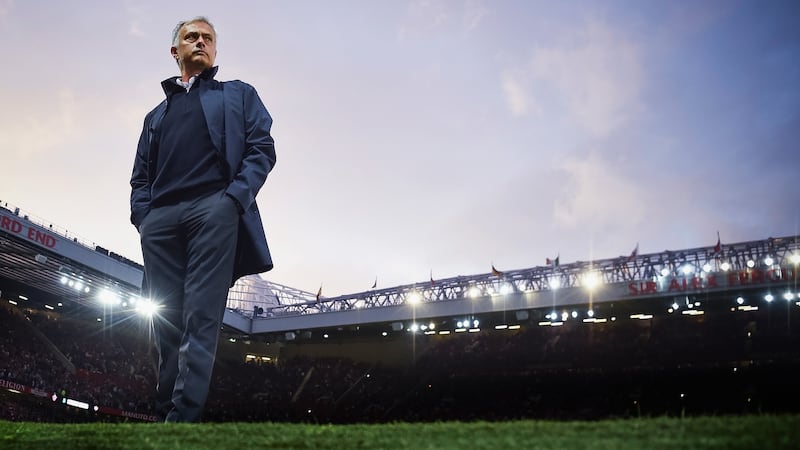Manchester United: the Lost Decade. If Amazon Prime wants another blockbuster sports series then start production to document what next season will be: 10 years searching in the wilderness for the title.
For added depth, perspective and poignancy feature a narrative strand about how the final league derby with Manchester City (Sunday, 4.30pm) before that landmark campaign was entered found United in role reversal with their crosstown rivals: the record 20-times champions have become the club in freefall while City are the slickly run serial trophy winners.
United were last champions in May 2013. Ralf Rangnick’s tenure as interim manager will not end in a 21st crown – United are 19 points behind City with 11 matches left – so the drought will stretch into a barely comprehensible 10th season.
Since Sir Alex Ferguson's vintage triumphed, United's finishing positions are seventh, fourth, fifth, sixth, second, sixth, third and second. Also damning is how none of the sides assembled by David Moyes, Louis van Gaal, José Mourinho and Ole Gunnar Solskjær were true contenders. Of the two runners-up finishes, Mourinho's 2017-18 squad trailed 19 points behind City and last term's team, under Solskjær, were 12 behind Pep Guardiola's third champion team.
The post-Ferguson era has been a catalogue of sorry mismanagement, the chief culprits being Ed Woodward, the former executive vice-chairman, and the co-owner Joel Glazer for failing four times to hire the right number one and overseeing a dysfunctional transfer policy yet to be corrected.

If United were bound to be Ferguson-centric after his 26½-year reign, Moyes did not possess the vision for empire reconstruction. When Woodward and Glazer sacked him in April 2014, 34 league matches into a six-year deal, a slide had begun that continues eight years on.
Crapshoot
With no checks and balances, van Gaal, Moyes's successor, was allowed a transfer strategy more akin to a crapshoot than a coherent approach. Where, for example, was the due diligence on Ángel Di María that might have illuminated the player's reservations before a then British record £59.3 million (€71.8 million) was splurged? After signing he penned an open letter to Real Madrid fans outlining how he never wished to leave. As with Morgan Schneiderlin, Bastian Schweinsteiger, Marcos Rojo and other van Gaal recruits, Di María did not work out.
But the Dutchman did claim the 2016 FA Cup – the first trophy since Ferguson left. His reward? To be sacked by Woodward/Glazer the day after. They might argue that finishing sixth meant van Gaal had to be axed. Others might posit the decision showed an obsession with the bottom line: no Champions League football the following season meant a sizeable dip in revenue.
Next was Mourinho, whose last position had ended in the sack by Chelsea. Woodward/Glazer finally signed him after a reluctance the Portuguese's camp was aware of; not the best start. He proved a past-peak Mourinho, his demand for "respect, respect, respect" in one press conference meltdown encapsulating how his powers had waned and his frustration at being refused the purchase of Harry Maguire in summer 2018.
If this showed the club had learned from van Gaal's quasi-licence-to-sign, it seemed an odd application of the new strictures above Mourinho: if you employ a temperamental, three-times Premier League winner who insists on being backed what is the point in not backing him?
Mourinho did still claim the League Cup and Europa League in 2016-17 (the club’s most recent honours). But by Christmas 2018 Woodward/Glazer had sacked their third manager and would cull a fourth less than three years later when Solskjær’s second-place finish last season was followed by the team flatlining at the start of this.
Before then, the Norwegian appeared to be the one post-Ferguson manager who operated a joined-up transfer policy. Aaron Wan-Bissaka, Daniel James and Bruno Fernandes may have been of varying quality but they were seen as the same type of fast, technical footballer.
By then Woodward and Glazer had overseen what was billed as a “cultural reboot” where the (not really very) new idea was to acquire players who fitted those already in the squad and for the side to adhere to a “United style” of football that was quick and forward-thinking.

But in the last close season Solskjær misfired in the market. In came Cristiano Ronaldo, whose one-paced game made him the definition of an anti-reboot player, and Jadon Sancho, whose £73 million (€88.4 million) fee should have been offered to West Ham for Declan Rice or any other best-in-class midfielder – that area remaining a glaring weakness.
Staggering bill
Wrong buys have been particularly costly. In 2013-14 Moyes’s outlay was £69.42 million (€84.1 million). In 2014-15 van Gaal’s ran to £175.82 million (€212.9 million) and the next season it was £140.4 million (€170 million). Mourinho’s first term cost £166.5 million (€201.7 million), the next £178.56 million (€216.3 million). In 2019-20 Solskjær’s bill totalled a staggering £211.32 million (€256 million) and 2020-21’s was a (pandemic-induced) £75.42 million (€91.38 million) before last summer’s windows ran to £126/€152.6 million (nothing was spent in January).
This adds up to a £1.1 billion (€1.33 billion) outlay for a yield of zero titles, three cups and one Champions League quarter-final (under Moyes in 2014). The handling of outgoings also looks errant as the club potentially head for an expensive close season.
Paul Pogba is almost certain to leave for free – a £93 million (€112.6 million) loss. Anthony Martial, whose acquisition was up to £57.6 million (€69.7 million) depending on bonuses, also wants to depart; given that he is out of contract in 2024 the hit on any sale will be about £20 million (€24.2 million). Juan Mata, a £37.1 million (€44.9 million) buy under Moyes, has zero market value – he is 33 and a return of 30 league starts across the past four seasons suggests United were unwise to retain him for a cumulative salary of at least £33 million (€39.9 million). In 2019 Phil Jones was given a fresh four-year deal of about £5.2 million (€6.3 million) a year despite an already chequered injury record – he has made nine league starts since; another £20.8 million (€25.2 million) that might have been more prudently invested.
Donny van de Beek's £35 million (€42.3 million) acquisition in September 2020 has failed and if the on-loan midfielder departs in the summer United will have to swallow a minimum £10 million (€12.1 million) loss. Jesse Lingard, who will be out of contract in the close season, was convinced to stay last summer yet would have added £15 million (€18.1 million) to the coffers if sold then. These six players represent a minimum £200 million (€242.2 million) loss and when the £43 million (€52 million) compensation paid to sack Moyes, van Gaal, Mourinho and Solskjær is factored in, United are cast as financial spendthrifts despite the Glazers's reputation as shrewd business people.
In this tale of two crosstown clubs, City have become a smoothly tooled machine that purrs from title to title, apposite signing to apposite signing.
As United contemplate their lost decade, Joel Glazer and Richard Arnold, Woodward's successor, have to ensure the executive-level wrong turns have been learned from. And ask whether Mauricio Pochettino or Erik ten Hag, the favourites to be United's next manager, possess the X-factor of a Ferguson or Guardiola.
If the answer is no the lost decade may start to move towards a second.
– Guardian





















